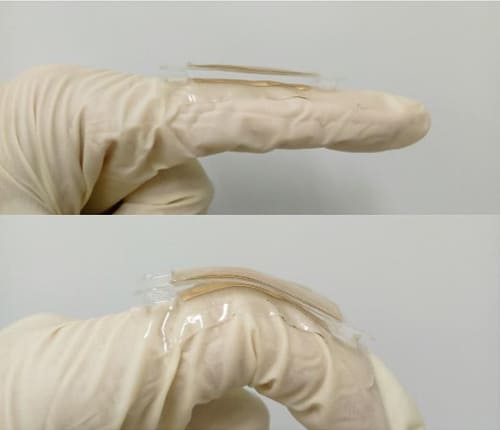A Sino American research team has developed a triboelectric nanogenerator, a wearable metallic tab that generates electricity from the simple physical movements.

The tab – developed in a project led by University at Buffalo and Institute of Semiconductors (IoP) at Chinese Academy of Science (CAS) - is described in a study published in Nano Energy.
"No one likes being tethered to a power outlet or lugging around a portable charger. The human body is an abundant source of energy. We thought: 'Why not harness it to produce our own power?'" said lead author Qiaoqiang Gan, PhD, associate professor of electrical engineering in UB's School of Engineering and Applied Sciences.
Triboelectric charging occurs when certain materials become electrically charged after coming into contact with a different material.
Triboelectric nanogenerators (TENGs) have been proposed before, but most are difficult to manufacture because they require complex lithography, or are not cost-effective. The tab that the UB and CAS team are developing is said to address both issues
Their device consists of two thin layers of gold, with polydimethylsiloxane (PDMS) sandwiched in between. Key to the device is that one layer of gold is stretched, causing it to crumple upon release. When that force is reapplied the motion leads to friction between the gold layers and PDMS.
"This causes electrons to flow back and forth between the gold layers. The more friction, the greater the amount of power is produced," said Yun Xu, PhD, professor of IoP at CAS.
The study describes a small tab (1.5cm long by 1cm wide). It is said to have delivered a maximum voltage of 124V, a maximum current of 10μA and a maximum power density of 0.22mW per square centimetre. Whilst not enough to quickly charge a smartphone, the device was able to illuminate 48 red LED lights simultaneously.
Nan Zhang, a PhD student at UB, is now leading a team of UB undergraduates that is tasked with improving the tab's performance. The team plans to use larger pieces of gold, which when stretched and folded together are expected to deliver even more electricity.
Researchers are also working on developing a portable battery to store energy produced by the tab. They foresee the system serving as a power source for various wearable and self-powered electronic devices.





Poll: Should the UK’s railways be renationalised?
I think that a network inclusive of the vehicles on it would make sense. However it remains to be seen if there is any plan for it to be for the...